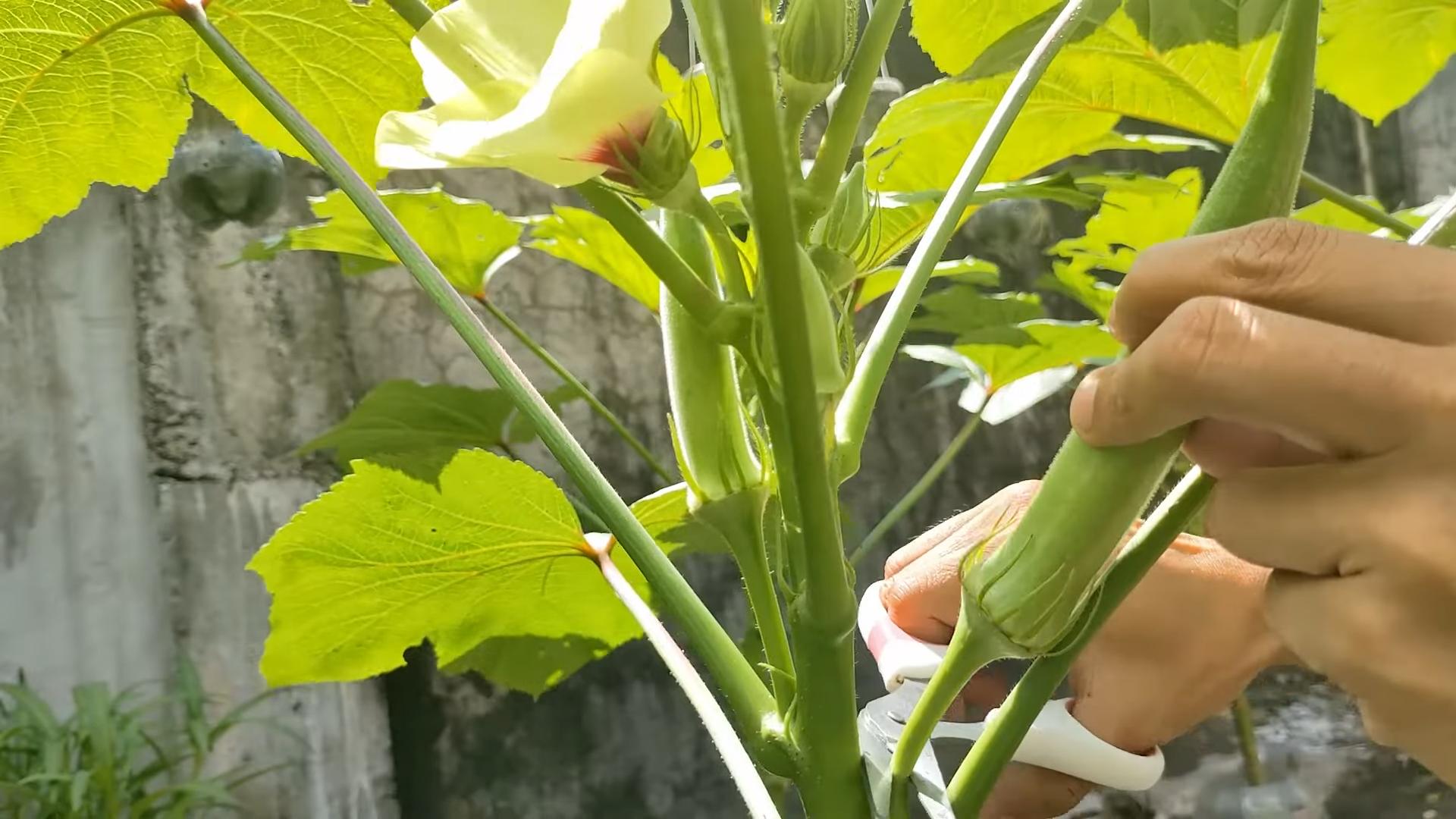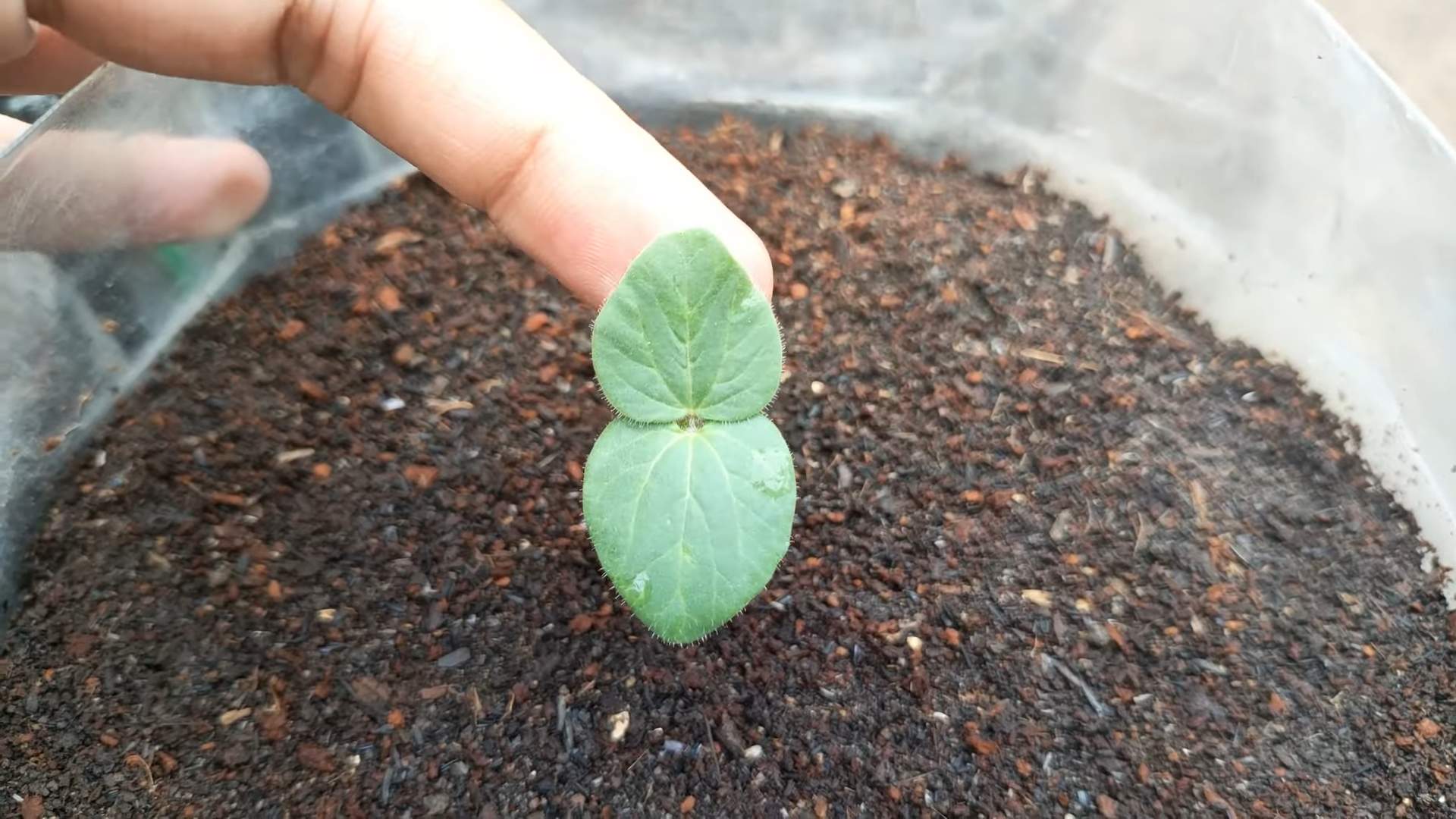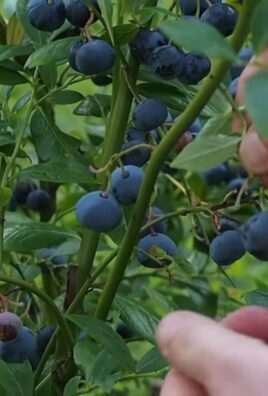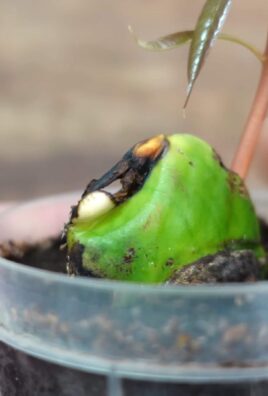Growing Okra at Home can seem daunting, but trust me, it’s more rewarding than you might think! Imagine stepping into your backyard and harvesting fresh, vibrant okra pods, ready to be transformed into a delicious gumbo or a crispy, fried side dish. Forget those bland, store-bought vegetables; with a little know-how, you can cultivate your own okra patch bursting with flavor.
Okra, also known as “lady’s fingers,” has a rich history, tracing back to ancient Ethiopia and Egypt. It then spread throughout North Africa, the Middle East, and eventually, the Americas. For generations, okra has been a staple in Southern cuisine, celebrated for its unique texture and nutritional benefits.
But why should you bother with growing okra at home? Well, for starters, it’s incredibly satisfying to nurture a plant from seed to harvest. Plus, homegrown okra tastes significantly better than anything you’ll find in the supermarket. More importantly, knowing exactly where your food comes from and how it’s grown gives you peace of mind. In this article, I’m going to share some simple yet effective DIY tricks and hacks that will make growing okra at home a breeze, even if you’re a complete beginner. Get ready to unlock the secrets to a bountiful okra harvest!

Growing Okra at Home: A Beginner’s Guide to Bountiful Harvests
Hey there, fellow gardening enthusiasts! I’m so excited to share my experience and tips on growing okra at home. Okra, also known as lady’s fingers, is a warm-season vegetable that’s not only delicious but also packed with nutrients. Plus, those beautiful hibiscus-like flowers are a real treat for the eyes! I’ve found that growing okra is surprisingly easy, even for beginners. So, grab your gardening gloves, and let’s get started!
Choosing the Right Okra Variety
Before we dive into the nitty-gritty, let’s talk about choosing the right okra variety for your garden. There are several options available, each with its own unique characteristics. Here are a few popular choices:
* Clemson Spineless: This is a classic variety known for its smooth, spineless pods, making harvesting a breeze. It’s also a reliable producer and a great choice for beginners.
* Burgundy: If you’re looking for something a little different, Burgundy okra boasts beautiful red pods that add a pop of color to your garden. The pods turn green when cooked.
* Emerald: This variety is prized for its tender, dark green pods and excellent flavor. It’s also known for its high yields.
* Dwarf Green Long Pod: Perfect for smaller gardens or container gardening, this variety produces compact plants with long, slender pods.
I personally love Clemson Spineless because it’s so easy to harvest, but feel free to experiment and find the variety that best suits your taste and growing conditions.
Preparing Your Garden for Okra
Okra thrives in warm weather and requires plenty of sunshine. Before planting, it’s crucial to prepare your garden bed properly to ensure healthy growth and abundant yields.
* Sunlight: Okra needs at least 6-8 hours of direct sunlight per day. Choose a location in your garden that receives ample sunlight throughout the day.
* Soil: Okra prefers well-drained soil that is rich in organic matter. Amend your soil with compost or aged manure to improve its fertility and drainage. A slightly acidic to neutral soil pH (6.0-7.0) is ideal.
* Spacing: Okra plants can grow quite tall, so it’s important to provide them with enough space. Space your plants 12-18 inches apart in rows that are 3-4 feet apart. This will allow for good air circulation and prevent overcrowding.
* Fertilizing: Before planting, incorporate a balanced fertilizer into the soil. Look for a fertilizer with an NPK ratio of 10-10-10 or something similar. Follow the instructions on the fertilizer package for application rates.
Step-by-Step Planting Guide
Now that your garden bed is prepared, it’s time to plant your okra seeds! Here’s a step-by-step guide to help you get started:
1. Soaking the Seeds: Okra seeds have a hard outer coating, so soaking them in water for 12-24 hours before planting can help improve germination rates. I usually put my seeds in a small bowl of water the night before I plan to plant them.
2. Planting Depth: Plant your okra seeds about 1/2 to 1 inch deep in the soil.
3. Spacing: As mentioned earlier, space your seeds 12-18 inches apart.
4. Watering: After planting, water the soil thoroughly to ensure good seed-to-soil contact. Keep the soil consistently moist until the seeds germinate.
5. Germination: Okra seeds typically germinate in 5-10 days, depending on soil temperature and moisture levels. Be patient, and you’ll soon see those little seedlings popping up!
Caring for Your Okra Plants
Once your okra plants have emerged, it’s important to provide them with proper care to ensure healthy growth and abundant yields.
* Watering: Okra plants need consistent moisture, especially during hot, dry weather. Water deeply and regularly, aiming to keep the soil consistently moist but not waterlogged. I usually water my okra plants every 2-3 days, depending on the weather.
* Fertilizing: Side-dress your okra plants with a nitrogen-rich fertilizer every 4-6 weeks to promote healthy growth and pod production. I like to use a fertilizer like blood meal or fish emulsion.
* Weeding: Keep your garden bed free of weeds, as they can compete with your okra plants for nutrients and water. Hand-pull weeds regularly or use a hoe to cultivate the soil around your plants.
* Mulching: Apply a layer of mulch around your okra plants to help retain moisture, suppress weeds, and regulate soil temperature. I like to use straw or shredded leaves as mulch.
* Pest Control: Okra plants can be susceptible to certain pests, such as aphids, flea beetles, and corn earworms. Inspect your plants regularly for signs of infestation and take appropriate action if necessary. I prefer to use organic pest control methods, such as insecticidal soap or neem oil.
* Pruning: While not always necessary, pruning can help improve air circulation and encourage bushier growth. You can remove any yellowing or damaged leaves, as well as any suckers that grow from the base of the plant.
Harvesting Your Okra
Harvesting okra at the right time is crucial for ensuring tender and flavorful pods. Okra pods typically mature 50-65 days after planting.
* Harvesting Time: Harvest your okra pods when they are 2-4 inches long. Larger pods can become tough and fibrous.
* Harvesting Technique: Use a sharp knife or pruning shears to cut the pods from the plant. Be careful not to damage the plant.
* Harvesting Frequency: Okra plants produce pods continuously throughout the growing season, so harvest them every 1-2 days to encourage further production.
* Handling: Okra pods can be prickly, so wear gloves when harvesting to protect your hands.
Dealing with Common Okra Problems
Even with the best care, you may encounter some common problems when growing okra. Here are a few issues to watch out for and how to address them:
* Yellowing Leaves: Yellowing leaves can be a sign of nutrient deficiency, overwatering, or pest infestation. Check your soil pH and nutrient levels, adjust your watering schedule, and inspect your plants for pests.
* Stunted Growth: Stunted growth can be caused by poor soil, lack of sunlight, or root-knot nematodes. Amend your soil with compost, ensure your plants receive adequate sunlight, and consider using a soil amendment to control nematodes.
* Blossom End Rot: Blossom end rot is a condition that causes the ends of the pods to rot. It’s usually caused by calcium deficiency or inconsistent watering. Ensure your soil has adequate calcium levels and water your plants consistently.
* Pest Infestations: As mentioned earlier, okra plants can be susceptible to various pests. Inspect your plants regularly and take appropriate action if you notice any signs of infestation.
Extending the Okra Season
If you live in a region with a shorter growing season, there are a few things you can do to extend the okra season:
* Start Seeds Indoors: Start your okra seeds indoors 4-6 weeks before the last expected frost. This will give your plants a head start and allow you to harvest earlier.
* Use Row Covers: Cover your okra plants with row covers to protect them from frost and extend the growing season.
* Choose Early-Maturing Varieties: Select okra varieties that mature quickly, such as Dwarf Green Long Pod.
Enjoying Your Okra Harvest
Now that you’ve harvested your okra, it’s time to enjoy the fruits (or rather, pods!) of your labor. Okra can be cooked in a variety of ways, including frying, grilling, roasting, and adding it to soups and stews. Here are a few of my favorite okra recipes:
* Fried Okra: This is a classic Southern dish that’s crispy on the outside and tender on the inside.
* Grilled Okra: Grilling okra gives it a smoky flavor that’s perfect for summer barbecues.
* Okra Gumbo: Okra is a key ingredient in gumbo, a flavorful stew that’s popular in Louisiana.
* Roasted Okra: Roasting okra brings out its natural sweetness and makes it a delicious side dish.
I hope this guide has inspired you to try growing okra at home. It’s a rewarding experience that will provide you with fresh, delicious vegetables all season long. Happy gardening!

Conclusion
So, there you have it! Growing okra at home isn’t just a gardening project; it’s an investment in fresh, delicious, and nutritious food right at your fingertips. We’ve walked through the essential steps, from selecting the right variety and preparing your soil to nurturing your plants and harvesting your bounty. The beauty of this process lies in its simplicity and the incredible reward it offers.
Why is this DIY trick a must-try? Because store-bought okra simply can’t compare to the flavor and texture of freshly picked, homegrown pods. You control the growing environment, ensuring your okra is free from unwanted pesticides and herbicides. Plus, there’s an undeniable satisfaction in nurturing a plant from seed to table. It’s a connection to nature that’s both grounding and fulfilling.
But the journey doesn’t end here! Feel free to experiment with different okra varieties. Clemson Spineless is a classic choice, but consider trying Burgundy okra for its beautiful red pods or Emerald okra for its tender texture. You can also explore companion planting to enhance your okra’s growth. Basil, peppers, and cucumbers are excellent companions that can deter pests and improve soil health.
Don’t be afraid to get creative with your okra harvest. While frying okra is a Southern staple, there are countless other ways to enjoy this versatile vegetable. Try grilling it for a smoky flavor, adding it to soups and stews for a thickening agent, or pickling it for a tangy treat. The possibilities are endless!
We wholeheartedly encourage you to embark on this okra-growing adventure. It’s a rewarding experience that will not only enhance your culinary repertoire but also connect you with the natural world. Remember to document your progress, take photos of your thriving okra plants, and most importantly, share your experiences with us! We’d love to hear about your successes, challenges, and creative okra recipes. Let’s build a community of home gardeners who appreciate the joys of growing their own food. So, grab your seeds, prepare your soil, and get ready to enjoy the deliciousness of homegrown okra! This is a fantastic way to ensure you have access to fresh, healthy produce, and it’s a skill that will serve you well for years to come. Embrace the journey, and happy gardening!
Now, let’s address some frequently asked questions to ensure your okra-growing experience is a resounding success.
Frequently Asked Questions (FAQ)
What is the best time to plant okra?
Okra thrives in warm weather, so the best time to plant it is after the last frost when the soil has warmed up to at least 65°F (18°C). In most regions, this is typically in late spring or early summer. Planting too early in cold soil can hinder germination and stunt growth. If you live in a region with a short growing season, you can start okra seeds indoors 4-6 weeks before the last expected frost and transplant them outdoors once the weather warms up.
How much sunlight does okra need?
Okra requires at least 6-8 hours of direct sunlight per day to thrive. Choose a planting location that receives ample sunlight throughout the day. Insufficient sunlight can lead to leggy growth, reduced flowering, and smaller pods. If you’re growing okra in containers, make sure to place them in a sunny spot.
What type of soil is best for growing okra?
Okra prefers well-drained, fertile soil with a slightly acidic to neutral pH (6.0-7.0). Amend your soil with compost or other organic matter to improve drainage, fertility, and water retention. Avoid planting okra in heavy clay soil, as it can become waterlogged and inhibit root growth. If you have clay soil, consider growing okra in raised beds or containers with a well-draining potting mix.
How often should I water okra plants?
Okra needs consistent moisture, especially during hot, dry weather. Water deeply and regularly, aiming to keep the soil consistently moist but not waterlogged. Water at the base of the plants to avoid wetting the foliage, which can increase the risk of fungal diseases. Mulching around the plants can help retain moisture and suppress weeds. As a general rule, water okra plants 1-2 times per week, depending on the weather conditions.
How often should I fertilize okra plants?
Okra benefits from regular fertilization to support its rapid growth and heavy fruiting. Apply a balanced fertilizer (e.g., 10-10-10) at planting time and then side-dress with a nitrogen-rich fertilizer every 4-6 weeks during the growing season. Avoid over-fertilizing, as this can lead to excessive foliage growth at the expense of pod production. You can also use organic fertilizers, such as compost tea or fish emulsion, to provide nutrients to your okra plants.
When and how should I harvest okra?
Okra pods are typically ready to harvest 50-65 days after planting. Harvest the pods when they are young and tender, typically 2-4 inches long. Use a sharp knife or pruning shears to cut the pods from the plant, leaving a short stem attached. Harvest okra every 1-2 days to encourage continuous production. Overripe pods become tough and fibrous. Wear gloves when harvesting okra, as the pods can be prickly and irritating to the skin.
What are some common pests and diseases that affect okra?
Okra can be susceptible to various pests and diseases, including aphids, flea beetles, corn earworms, and fungal diseases like powdery mildew and Fusarium wilt. Monitor your plants regularly for signs of pests or diseases and take appropriate action. Use insecticidal soap or neem oil to control aphids and flea beetles. Handpick corn earworms from the plants. Improve air circulation and avoid overwatering to prevent fungal diseases. Consider using disease-resistant okra varieties to minimize the risk of disease problems.
Can I grow okra in containers?
Yes, okra can be successfully grown in containers, provided you choose a large enough container (at least 5 gallons) and use a well-draining potting mix. Select a sunny location for your container-grown okra and water regularly. Fertilize the plants every 2-3 weeks with a balanced fertilizer. Container-grown okra may require more frequent watering and fertilization than okra grown in the ground.
How can I save okra seeds for next year?
To save okra seeds, allow some pods to mature fully on the plant. The pods will turn brown and dry out. Once the pods are completely dry, harvest them and remove the seeds. Spread the seeds out on a tray to dry completely for a few days. Store the dried seeds in an airtight container in a cool, dark, and dry place. Okra seeds can remain viable for several years if stored properly.
My okra plants are growing tall but not producing many pods. What could be the problem?
Several factors can contribute to poor pod production in okra plants. Insufficient sunlight, over-fertilization with nitrogen, and inadequate watering can all hinder pod development. Make sure your okra plants are receiving at least 6-8 hours of direct sunlight per day. Avoid over-fertilizing with nitrogen, as this can promote excessive foliage growth at the expense of pod production. Water deeply and regularly, especially during hot, dry weather. Also, ensure that your okra plants are not overcrowded, as this can reduce air circulation and increase the risk of disease problems.





Leave a Comment